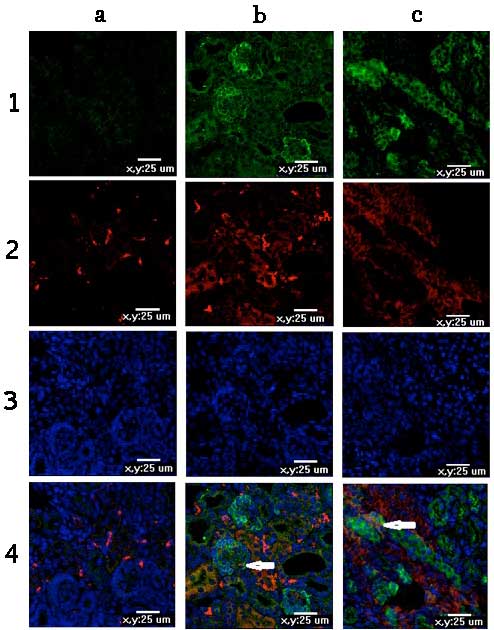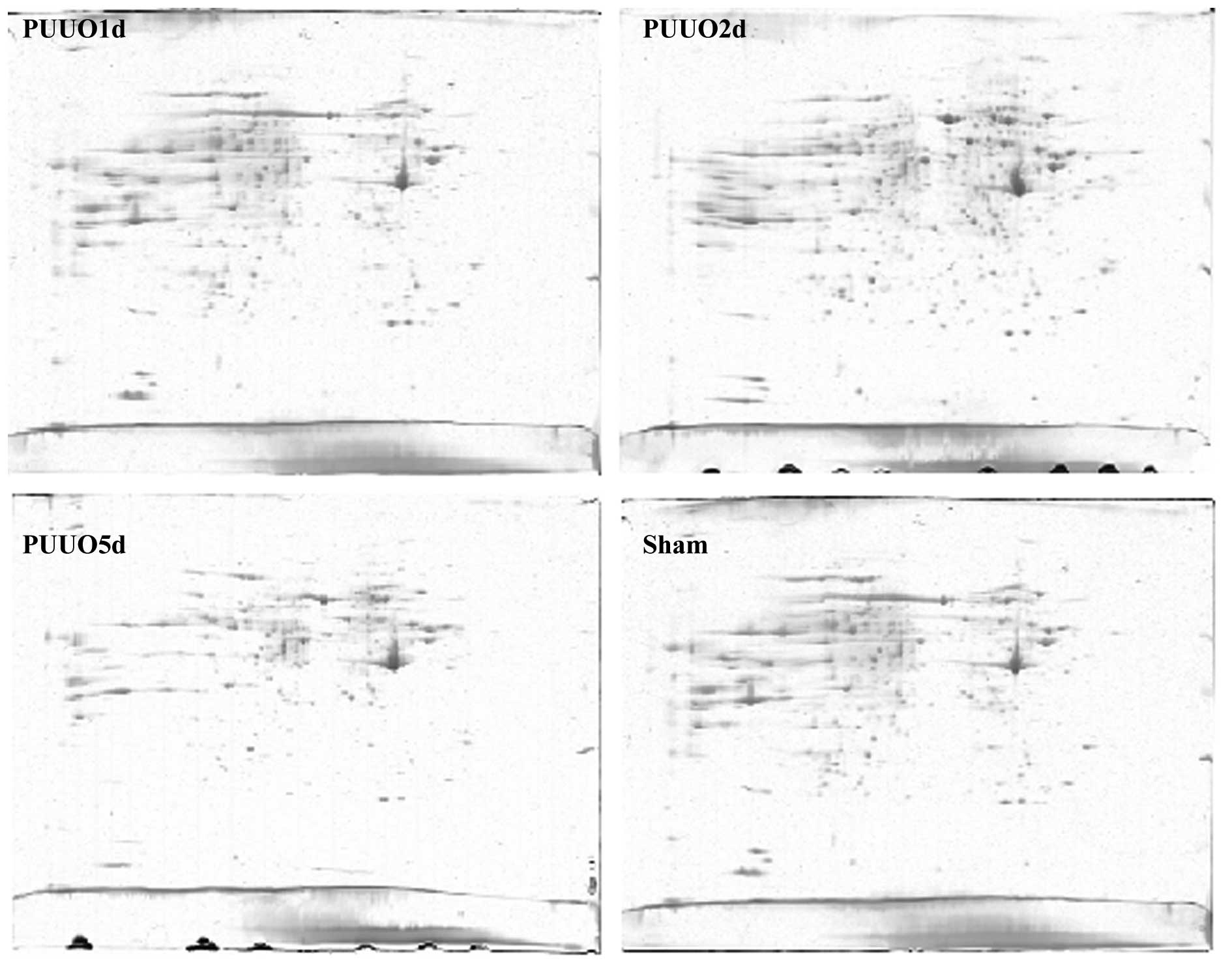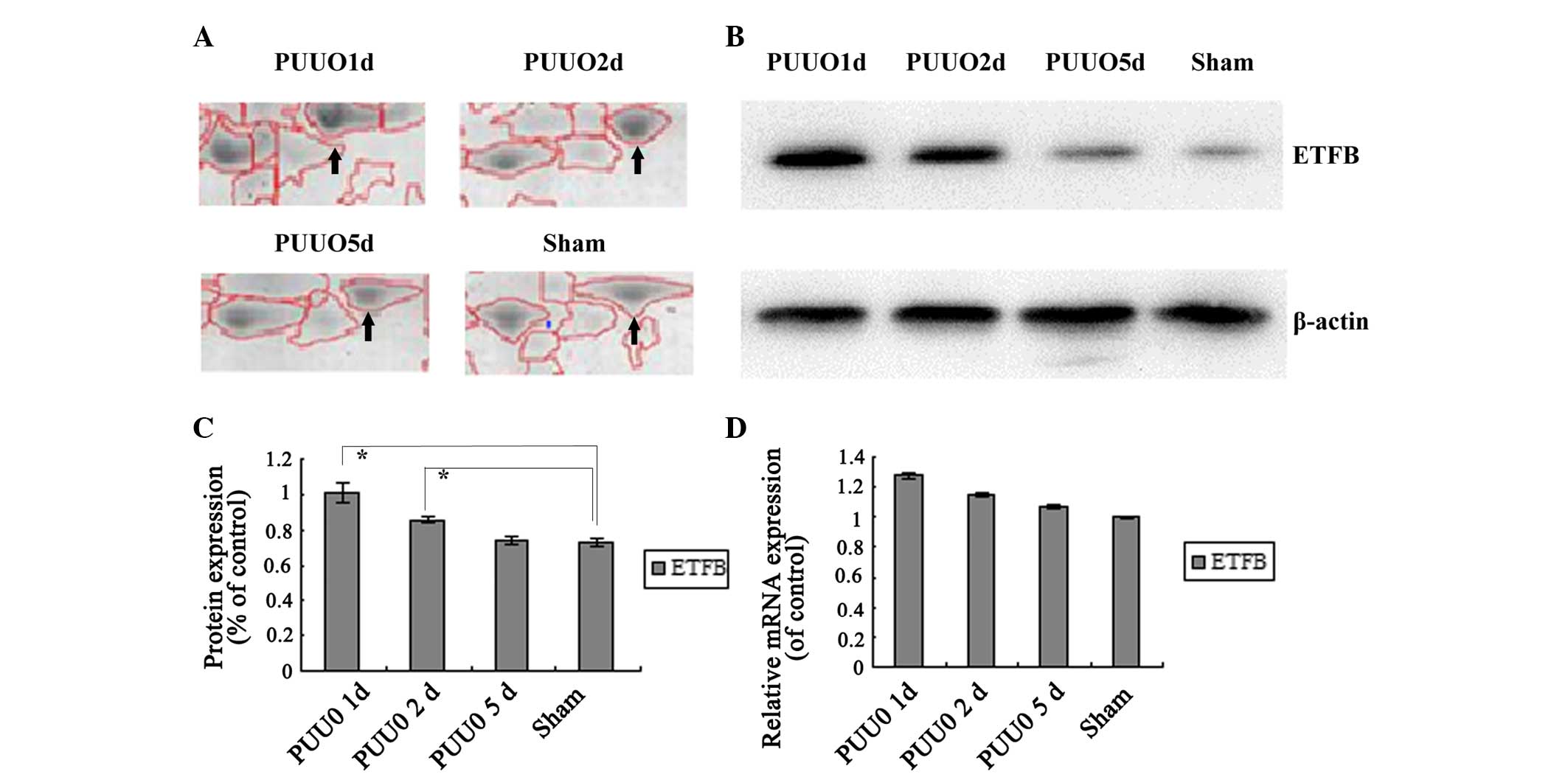|
1
|
Chevalier RL and Peters CA: Congenital
urinary tract obstruction: Proceedings of the State-Of-The-Art
Strategic Planning Workshop-National Institutes of Health Bethesda,
Maryland, USA 11–12 March 2002. Pediatr Nephrol. 18:576–606.
2003.PubMed/NCBI
|
|
2
|
Eddy AA: Molecular basis of renal
fibrosis. Pediatr Nephrol. 15:290–301. 2000. View Article : Google Scholar
|
|
3
|
Madsen MG, Nørregaard R, Frøkiær J and
Jørgensen TM: Urinary biomarkers in prenatally diagnosed unilateral
hydronephrosis. J Pediatr Urol. 7:105–112. 2011. View Article : Google Scholar : PubMed/NCBI
|
|
4
|
Wen JG, Ringgaard S, Jorgensen TM,
Stodkilde-Jorgensen H, Djurhuus JC and Frokiaer J: Long-term
effects of partial unilateral ureteral obstruction on renal
hemodynamics and morphology in newborn rats: a magnetic resonance
imaging study. Urol Res. 30:205–212. 2002. View Article : Google Scholar : PubMed/NCBI
|
|
5
|
Liu Y: New insights into
epithelial-mesenchymal transition in kidney fibrosis. J Am Soc
Nephrol. 21:212–222. 2010. View Article : Google Scholar
|
|
6
|
Chevalier RL: Obstructive nephropathy:
Towards biomarker discovery and gene therapy. Nat Clin Pract
Nephrol. 2:157–168. 2006. View Article : Google Scholar : PubMed/NCBI
|
|
7
|
Ulm AH and Miller F: An operation to
produce experimental reversible hydronephrosis in dogs. J Urol.
88:337–341. 1962.PubMed/NCBI
|
|
8
|
Zhao Q, Yang Y, Wang CL, Hou Y and Chen H:
Screening and identification of the differential proteins in kidney
with complete unilateral ureteral obstruction. Int J Clin Exp
Pathol. 8:2615–2626. 2015.PubMed/NCBI
|
|
9
|
Pappin DJ, Hojrup P and Bleasby AJ: Rapid
identification of proteins by peptide-mass fingerprinting. Curr
Biol. 3:327–332. 1993. View Article : Google Scholar : PubMed/NCBI
|
|
10
|
Livak KJ and Schmittgen TD: Analysis of
relative gene expression data using real-time quantitative PCR and
the 2(-Delta Delta C(T)) Method. Methods. 25:402–408. 2001.
View Article : Google Scholar
|
|
11
|
Li Y, Kang YS, Dai C, Kiss LP, Wen X and
Liu Y: Epithelial-to-mesenchymal transition is a potential pathway
leading to podocyte dysfunction and proteinuria. Am J Pathol.
172:299–308. 2008. View Article : Google Scholar : PubMed/NCBI
|
|
12
|
Thornhill BA, Burt LE, Chen C, Forbes MS
and Chevalier RL: Variable chronic partial ureteral obstruction in
the neonatal rat: A new model of ureteropelvic junction
obstruction. Kidney Int. 67:42–52. 2005. View Article : Google Scholar
|
|
13
|
Seseke F, Thelen P, Heuser M, Zöller G and
Ringert RH: Impaired nephrogenesis in rats with congenital
obstructive uropathy. J Urol. 165:2289–2292. 2001. View Article : Google Scholar : PubMed/NCBI
|
|
14
|
Yu XX, Wang CL, Sun RG, et al: Renal
pathological appearance and podocyte phenotype after the ureteral
obstruction. Journal of China Medical University. 39:1–3. 2010.
|
|
15
|
Dominguez R and Holmes KC: Actin structure
and function. Annu Rev Biophys. 40:169–186. 2011. View Article : Google Scholar : PubMed/NCBI
|
|
16
|
Small DM, Coombes JS, Bennett N, Johnson
DW and Gobe GC: Oxidative stress, anti-oxidant therapies and
chronic kidney disease. Nephrology (Carlton). 17:311–321. 2012.
View Article : Google Scholar
|
|
17
|
Hebert DN and Molinari M: In and out of
the ER: Protein folding, quality control, degradation, and related
human diseases. Physiol Rev. 87:1377–1408. 2007. View Article : Google Scholar : PubMed/NCBI
|
|
18
|
Ellgaard L, Molinari M and Helenius A:
Setting the standards: Quality control in the secretory pathway.
Science. 286:1882–1888. 1999. View Article : Google Scholar : PubMed/NCBI
|
|
19
|
Dickhout JG, Carlisle RE and Austin RC:
Interrelationship between cardiac hypertrophy, heart failure, and
chronic kidney disease: Endoplasmic reticulum stress as a mediator
of pathogenesis. Circ Res. 108:629–642. 2011. View Article : Google Scholar : PubMed/NCBI
|
|
20
|
Salahudeen AK, Huang H, Joshi M, Moore NA
and Jenkins JK: Involvement of the mitochondrial pathway in cold
storage and rewarming-associated apoptosis of human renal proximal
tubular cells. Am J Transplant. 3:273–280. 2003. View Article : Google Scholar : PubMed/NCBI
|
|
21
|
Manucha W, Kurbán F, Mazzei L, Benardón
ME, Bocanegra V, Tosi MR and Vallés P: eNOS/Hsp70 interaction on
rosuvastatin cytoprotective effect in neonatal obstructive
nephropathy. Eur J Pharmacol. 650:487–495. 2011. View Article : Google Scholar
|
|
22
|
Lodha S, Dani D, Mehta R, Bhaskaran M,
Reddy K, Ding G and Singhal PC: Angiotensin II-induced mesangial
cell apoptosis: Role of oxidative stress. Mol Med. 8:830–840.
2002.
|
|
23
|
Frerman FE: Acyl-CoA dehydrogenases,
electron transfer flavoprotein and electron transfer flavoprotein
dehydrogenase. Biochem Soc Trans. 16:416–418. 1988. View Article : Google Scholar : PubMed/NCBI
|
|
24
|
Beckmann JD and Frerman FE:
Electron-transfer flavoprotein-ubiquinone oxidoreductase from pig
liver: Purification and molecular, redox, and catalytic properties.
Biochemistry. 24:3913–3921. 1985. View Article : Google Scholar : PubMed/NCBI
|
|
25
|
Hirokawa S, Shimanuki T, Kitajima H,
Nishimori Y and Shimosaka M: Identification of ETFB as a candidate
protein that participates in the mechanoregulation of fibroblast
cell number in collagen gel culture. J Dermatol Sci. 64:119–126.
2011. View Article : Google Scholar : PubMed/NCBI
|
|
26
|
Hirokawa S, Shimanuki T, Kitajima H,
Nishimori Y and Shimosaka M: Knockdown of electron transfer
flavoprotein β subunit reduced TGF-β-induced α-SMA mRNA expression
but not COL1A1 in fibroblast-populated three-dimensional collagen
gel cultures. J Dermatol Sci. 68:179–186. 2012. View Article : Google Scholar : PubMed/NCBI
|












